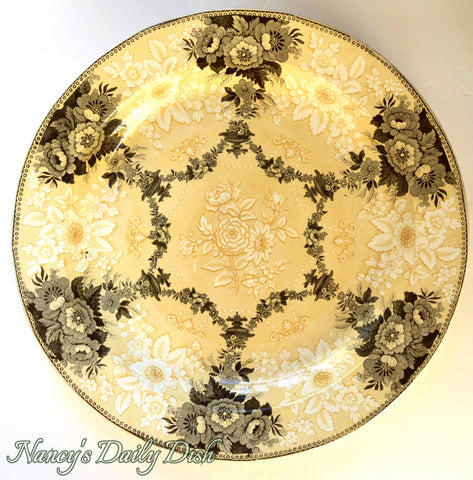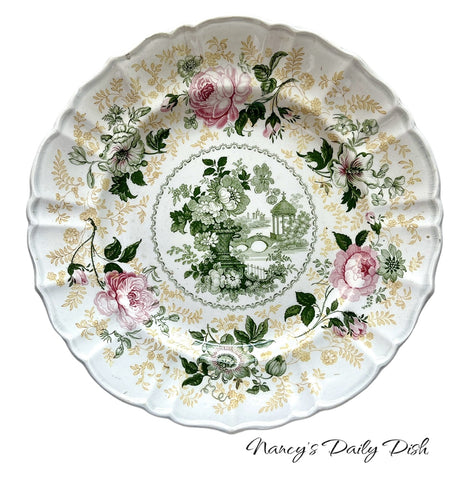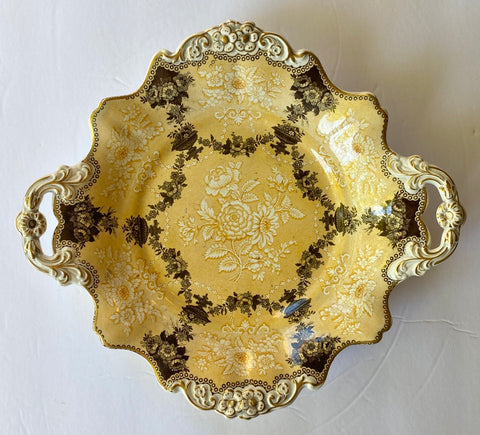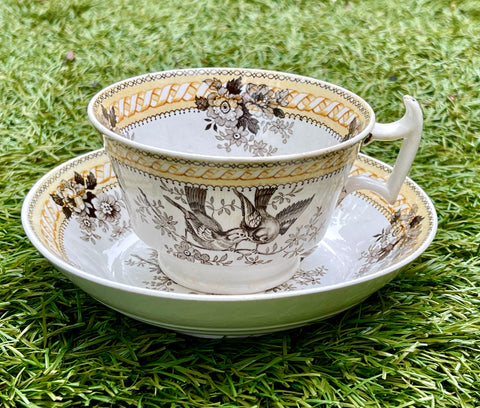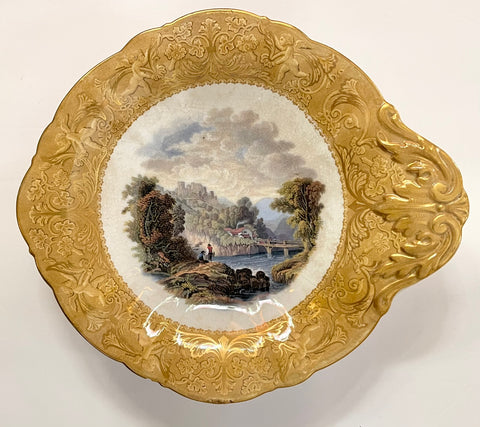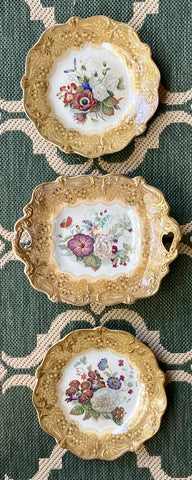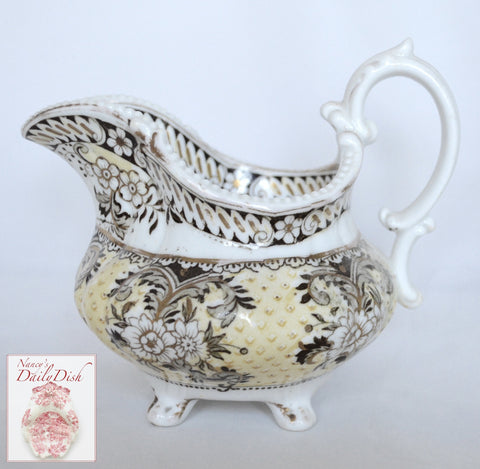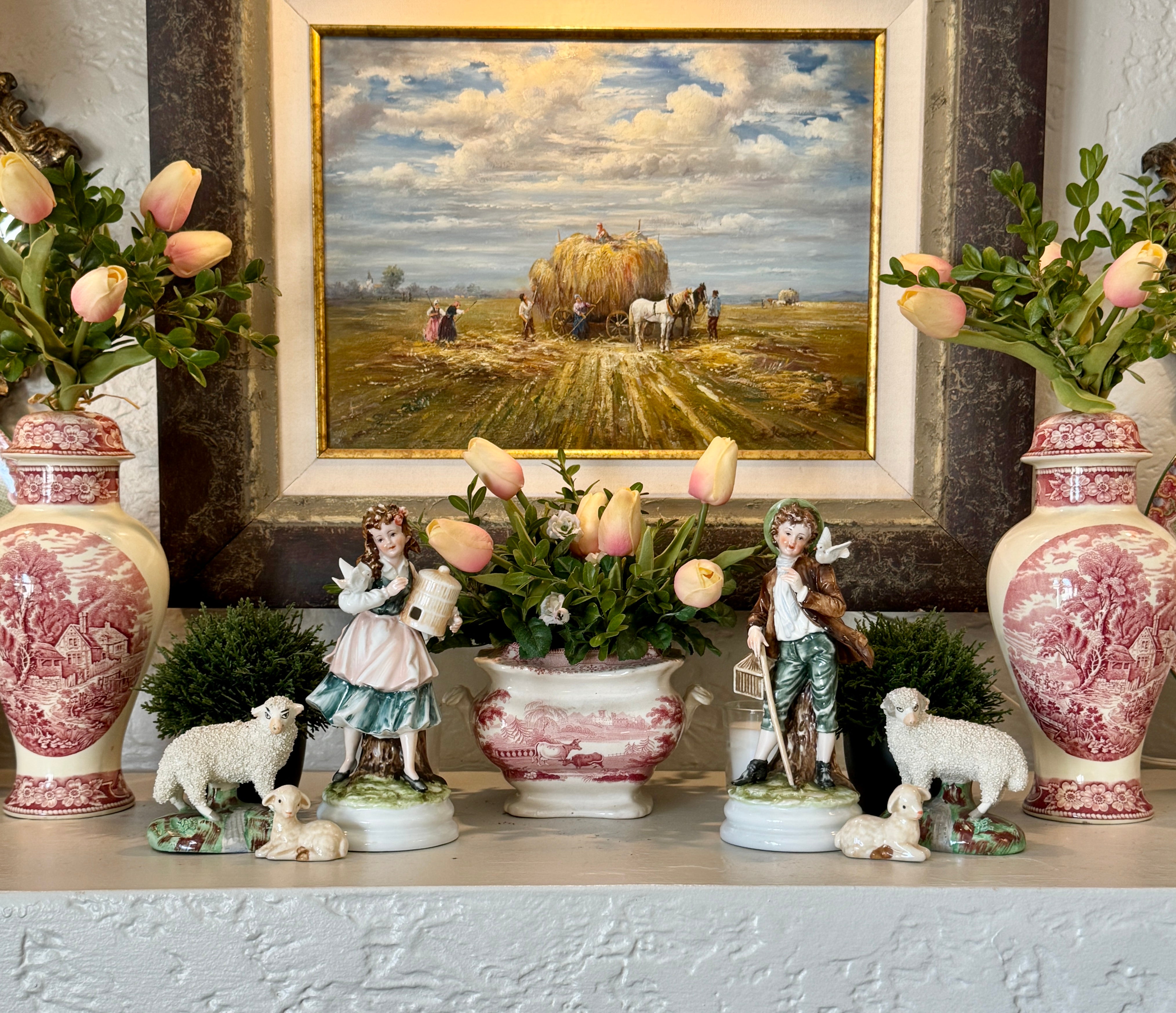Circa 1835 Yellow Bi Color Transferware Round Platter Etruscan Festoon Ridgway VERY RARE
$299.99
Brand Nancy's Daily Dish
After 1828, technology allowed potters to produce two and three color transfer wares. This truly stunning example dating to 1835, by Ridgway, is a very highly sought after piece in the Etruscan Festoon pattern. Yellow is the very rarest color of transferware, and the intricacy in transfer placement on this piece is unsurpassed. There is an alternating pattern of light and dark flowers. The light bouquets are placed over a double scroll and interweave with the dark swags below. The dark flowers are placed over the open urn filled with dark flowers and joined to the other urns with swags of flowers. The outer edge is decorated with a band of rosettes. The central area, surrounded by both dark and light swags, is filled with a spray of roses. Truly an exquisite and very seldom found piece even for the most selective of collectors.
Measures 12 3/4" x 1 3/8" deep
Condition: Minor rough spots around outer rim. Stilt marks, minor glaze pops (common during production of this time period), light discoloration to the back, crazing and a fleck of ink

